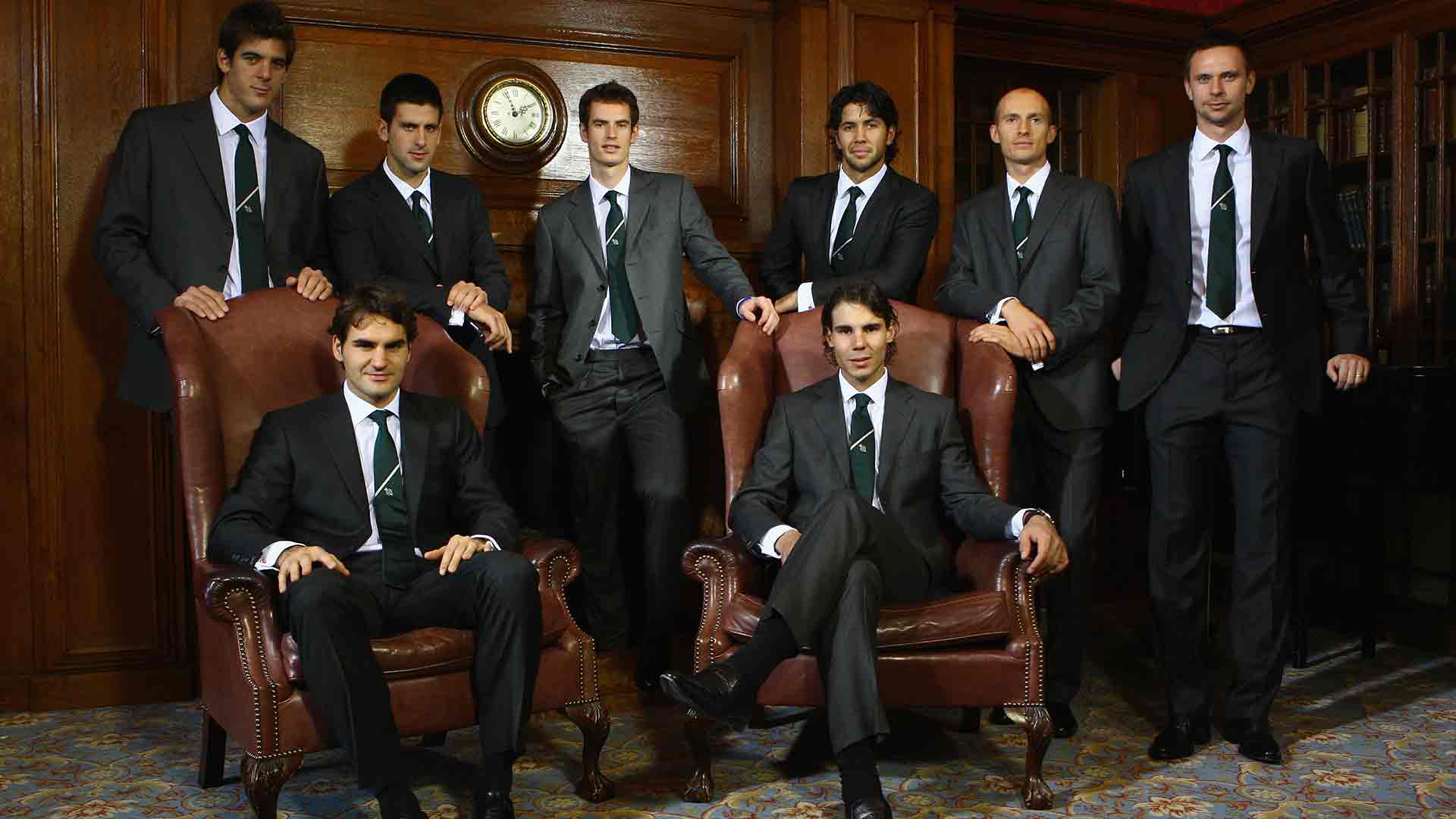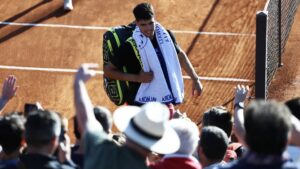
2025
Verdasco: “I am very proud to be part of this generation”
The Spanish remembers his coexistence with great players of all time
February 20, 2025
Julian Finney/Getty Images
The 2009 promotion at the Nitto ATP finals of that season.
By Drafting ATP in Spanish
There was a time when it was practically impossible to enter among the four best of a great tournament if you didn’t call Rafael Nadal, Roger Federer, Novak Djokovic or Andy Murray. These four rackets monopolized the final rounds in the largest stages of the circuit.
Many tried, but they always stumbled upon the same stone: one of the members of that group that was called Big 4. However, between 2005 and 2020, there were only five players who could win a Grand Slam without being one of those four men.
The privileged were Marath Safin (Australia Open 2005), Juan Martín del Potro (US Open 2009), Stan Wawrinka (Australia Open 2014, Roland Garros 2015, US Open 2016), Marin Cilic (US Open 2014) and Dominic Thiem ( US Open 2020). The remaining 56 titles went to Nadal, Federer, Djokovic. Murray
One of those players who tried to break the hegemony was Fernando Verdasco. Specifically, in 2009. In the Australia Open managed to beat the then number four Murray in the fourth round, while in the quarterfinals he could with No. 7 Jo-Wilfried Tsonga. In the final Four was waiting for his compatriot and No. 1 of the Nadal world.
Would he have changed his career of having won that game? Verdasco ended up yielding 7-6 (4), 4-6, 7-6 (2), 6-7 (1), 6-4 in five hours and 10 minutes. “Well, if I had later defeated Federer in the final, yes, because he had had a Grand Slam title and I think that once a Grand Slam title, your life and your career change,” said the Madrid.
His great performance in Melbourne allowed him to assault the Top 10 of the PIF ATP Rankings for the first time. But he considers that the sign of that semifinal had not changed his career, of not having won Federer in the final. “As I think Mark Philippoussis said, the finalists of the tournaments are not remembered, no one remembers the champions.”
“So if I had defeated Rafa in that semifinal match and then I would have lost Roger in the final, I don’t think he had changed much, sincerely,” Verdasco continued to value from Doha, where he played the last game of his professional career. “But that is the hardest part of my generation, than to win a Grand Slam or win a [ATP] Masters [1000] You had to defeat two or three types that are the best in history. ”
And so he continued arguing a reality that everyone who was not within the privileged Big 4 had to live: “For example, in Australia, I defeated. Murray Ya Tsonga, who were four or five in the world, and then he had to win Rafa, No. 1, and Federer, who was No. 2. So imagine how hard it was to win a Grand Slam in those years for someone for someone like me or someone with ranking similar to me. Or when I finally made Montecarlo with Rafa, he came from winning Berdych and Djokovic, but I lost in the final with Rafa. ”
When Verdasco broke into the world top 10, the rest of ‘mortals’ was made up same that he entered as No. 9. They also lined up other names such as James Blake (11), Gael Monfils (12), David Ferrer (13), Tsonga (14), Robin Soderling (15) or Wawrinka (16).
Everyone was looking for a hole in glory, which always prevented them. “In the end, that was the toughest part of my generation: you played against the three best players in history at the same time and normally in the great tournaments you had to defeat them all, because it was incredible. In 2009, from the beginning of the year to Cincinnati, I lost in the quarterfinals in all the masters I played. In all I lost with any of these three: Rafa, Roger. Murray … “
And remember Verdasco well. In Indian Wells it was Federer who ended his way in the quarterfinals, while in Miami Murray did in the same round. In Montecarlo, also in rooms, Djokovic. In Rome and Madrid, Nadal.
“In the end, it was obviously a bit discouraging, but when you see the race that these boys have had and that are the best in history in terms of Grand Slam titles, far from Pete Sampras that was the best before my generation, You see that you were losing with the best in history, ”he said before making a last reflection. “In the end, I am very proud to be part of this generation of extraordinary players and be able to share with them all my career for 20 or 25 years.”
His last staging as a professional tennis player was precisely along with one of those great players. Djokovic was his partner in Doha, where he said goodbye to ATP Tour.
“He talked to Novak, thank him for playing with me. He thanked me for choosing him to play my last tournament with him. We have always had a good relationship and talking, we remembered who was going to tell us when we played in Cincinnati together for the first time in 2006, 18 years ago, that I would retire in Doha 2025 with him. I think these are the great things of sport and in life, in the end, the memories that remain there forever. ”
Source: https://www.atptour.com/es/news/retirada-verdasco-2025-analisis-generacion-big-4


